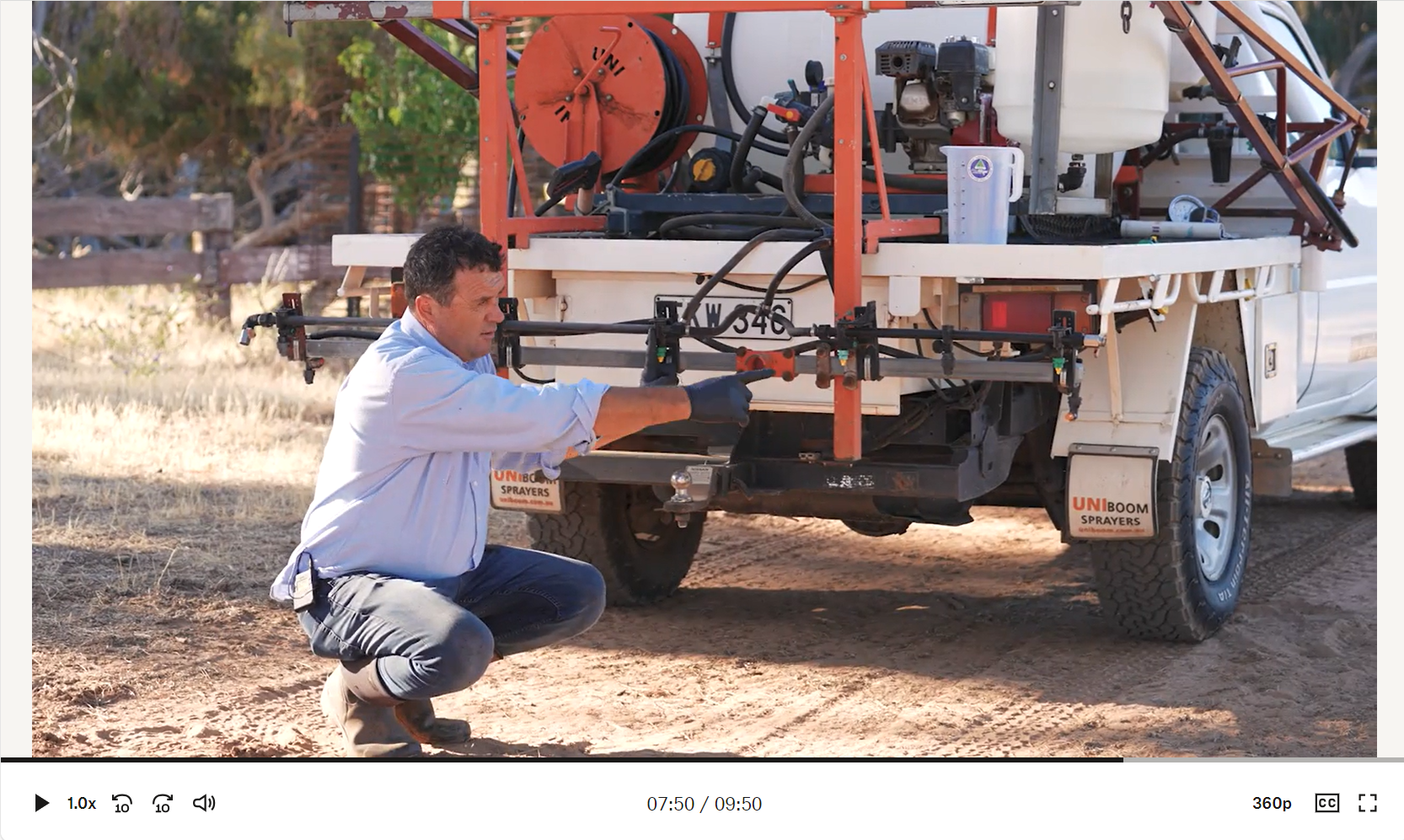Spray application and drift management video series


Welcome
Commissioned by spray expert, Craig Day, the aim of this special video series is to address issues surrounding spray application by creating a framework for each applicator or manager to break a complex operation into 3 core components:
- Sprayer operation and setup
- Tank mix
- Timing
The videos contain practical solutions to minimise spray drift while increasing the efficacy of any spray job, therefore reducing costs and minimising the risk of underdosing.
New! Check out the latest addition (Video 13) on farm chem safety which looks at appropriate practices to control the risk and maintain a safe workplace.
For maximum benefit, this video series is intended to be watched in order as former videos are referenced in later parts. All information shared is for educational purposes only.
- Video 1 of 13: Spraying 1,2,3 (2:43)
- Video 2 of 13: Nozzle classification and selection (4:07)
- Video 3 of 13: Nozzles in action (4:07)
- Video 4 of 13: Spray Planning (1:40)
- Video 5 of 13: Spray Plan Hardi 5030 (2:52)
- Video 6 of 13: Spray plan John Deere Exact Apply (5:25)
- Video 7 of 13: Spray Plan Goldacres 3TS (4:11)
- Video 8 of 13: Water Quality (7:56)
- Video 9 of 13: Fence line spraying (9:54)
- Video 10 of 13: Camera spraying considerations (7:27)
- Video 11 of 13: Practical tips for spraying (10:06)
- Video 12 of 13: Weather considerations (7:10)
- New! Video 13 of 13: Farm Chemical Safety - Controlling the Risk (8:01)
Video 1 of 12 - 'Spray 1,2,3' (2:43)
This video series explores the decisions that should go into a spray planning process to 'get the job done right.'
Video 2 of 12 - Nozzle classification and selection (5:03)
For this next part, we're going to take a closer look at optimal pressure.
Video 3 of 12 - Nozzles in action (4:06)
We'll start by looking at the percentage of loss or droplets less than 150 microns across different nozzles in an O2 capacity at three bar.
Video 4 of 12 - Spray planning (1:39)
Developing a spray plan is important because it allows you to develop a management strategy for safe and responsible application.
Video 5 of 12 - Spray Plan Hardi 5030 (2:52)
We'll now look at preparing a spray plan for a 50 30 harney standard, 50 centimetre space sprayer.
Video 6 of 12 - Spray plan John Deere Exact Apply (5:25)
For our second spray plan, we'll concentrate on a John Deere Exact Apply, but what we're talking about here can relate to any pulse width modulated sprayer.
Video 7 of 12 - Spray Plan Goldacres 3TS (4:11)
We've looked at a standard sprayer, we've looked at a pulse width modulated sprayer, now let's look at a tiered sprayer.
Video 8 of 12 - Water quality (7:56)
With water quality, we have to know what we're dealing with.
Video 9 of 12 - Fenceline spraying (9:54)
We're now going to look at how you can calibrate the fenceline sprayer.
Video 10 of 12 - Camera spraying considerations (7:27)
We'll start by looking at how you calibrate a camera spray that's running an even block of nozzles, not a tapered flat fan.
Video 11 of 12 - Practical tips for spraying (10:06)
Let's dive deeper into the spraying process. An applicator has to grip a whole range of aspects from fluid dynamics to electronics.
Video 12 of 12 - Weather considerations (7:09)
Let's look at weather conditions and start with the importance of measuring at the site of application.
New! Video 13 of 13 - Farm Chemical Safety - Controlling the Risk (8:01)
Let's look at farm chem safety and appropriate practices to control the risk and maintain a safe workplace.